RECOIL OFFGRID Preparation Iconic Survival Knives – Part Two: Ka-Bar Knife History
In This Article
Certain knives we associate with cultures, such as the Filipino balisong or the Japanese tanto; other knives we associate with professions, like a surgeon’s scalpel or a butcher’s knife. There’s one knife we associate with the U.S. Marine Corps, a branch of the military where culture and profession intersect, and that knife is the Ka-Bar. If a Marine is on active duty, there’s a good chance he has one lashed to his kit or on his belt. If a Marine is no longer in service, he almost certainly has at least one squirreled away somewhere.
Although the Marines aren’t the only branch of the U.S. military to use this knife, people associate the Ka-Bar with the Marine Corps, and when people are looking for a good survival-type knife, it’s their Marine friends they usually look to for endorsement.
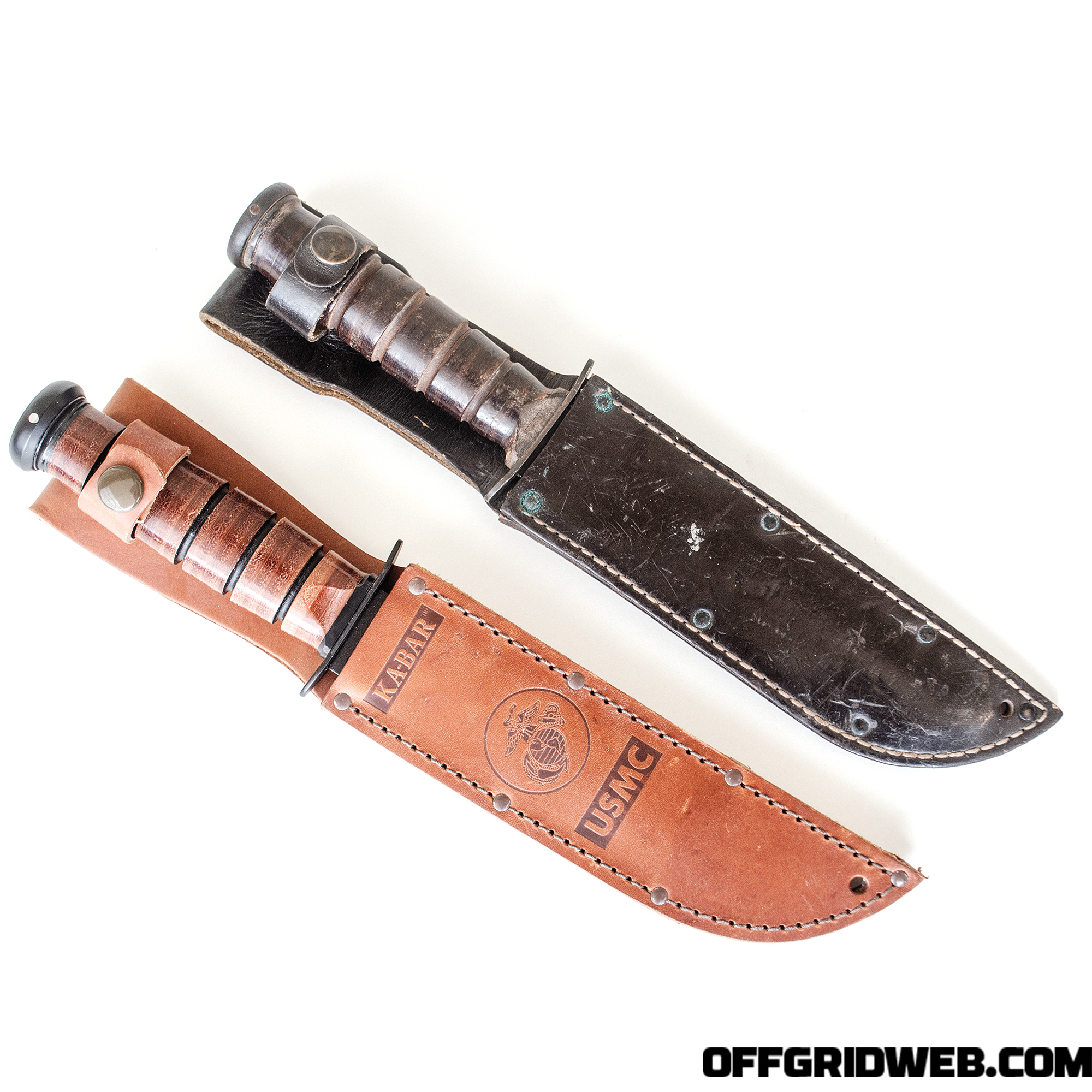
As with anything that people don’t understand completely, there are myths surrounding the Ka-Bar knife. One of the earliest we heard was that it was military shorthand for a bayonet used for the Browning Automatic Rifle (BAR). That old sea story holds that it stood for “Knife Attachment, Browning Automatic Rifle,” hence KA-BAR. Despite there being no way to directly attach a Ka-Bar knife to a BAR, this legend pops up from time to time and people believe it.

The KA-BAR trademark can be traced back to one of the first manufacturers of the Ka-Bar: Union Cutlery. According to company records, in 1923, the company received a letter purportedly from a fur trapper who had used a Union Cutlery knife to kill a wounded bear that attacked the trapper.
Apparently, poor handwriting combined with poorer spelling made the letter barely legible. The phrase “K a Bar” could be read, as fragments of the phrase “kill a bear.” Someone higher up on the chain of command liked it and decided that Union Cutlery should use Ka-Bar as its trademark. It soon began appearing as a stamp on all the company’s knives.
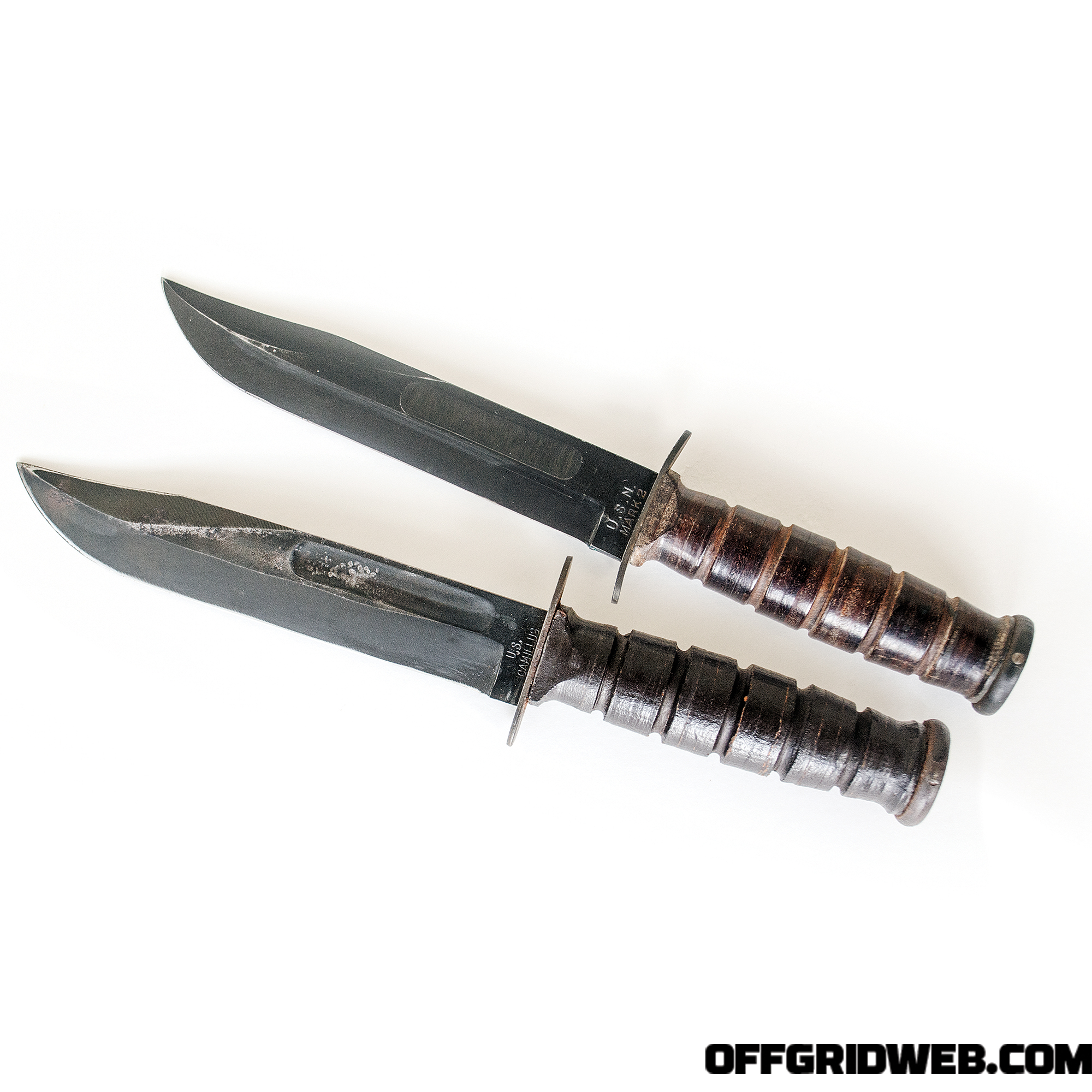
Even 80 years after their first issue, some Ka-Bar knives are still getting the job done in the field.
After the outbreak of World War II, the Marine Corps found itself in need of a better knife. Knives throughout the Corps reflected knuckle-guard-equipped trench daggers from World War I, the U.S. Navy Mark 1 utility knife, various machetes, and the Raider stiletto.
Two Marine officers, Colonel John M. Davis and Major Howard E. America, were tasked with finding a modern and effective fighting knife and asked several military knife and tool manufacturers to submit designs for the war effort.
The officers eliminated quite a few designs and decided the U.S. Navy Mark 1 utility knife would make a good starting point, with elements adopted from common hunting and utility knives from the era. One manufacturer seemed to be more responsive or easier to work with than the rest: Union Cutlery.
Union Cutlery lengthened and widened the blade while using a thicker bar of steel from which to grind. The famous “blood groove” was adopted to lighten the blade, and a stacked handle made of leather washers was selected to improve the grip. In keeping with Mil-spec metal treatments, the blade, pommel, and steel cross guard were Parkerized as opposed to being polished. Lastly, the profile of the blade was changed to a clip point as featured on the American Bowie knife (refer to Part One of our knife history series in Issue 37 for an overview of this iconic tool).
Davis and America felt they had their knife and put it to the test. While it passed with flying colors, they ran into a problem purchasing the knife, so they had to escalate to the commandant of the Marine Corps, Lt. General Thomas Holcomb. The commandant overrode the quartermaster’s decision, and the Marine Corps officially approved the knife on November 23, 1942, as the M1219C2. It would be manufactured by several different suppliers in subsequent years.
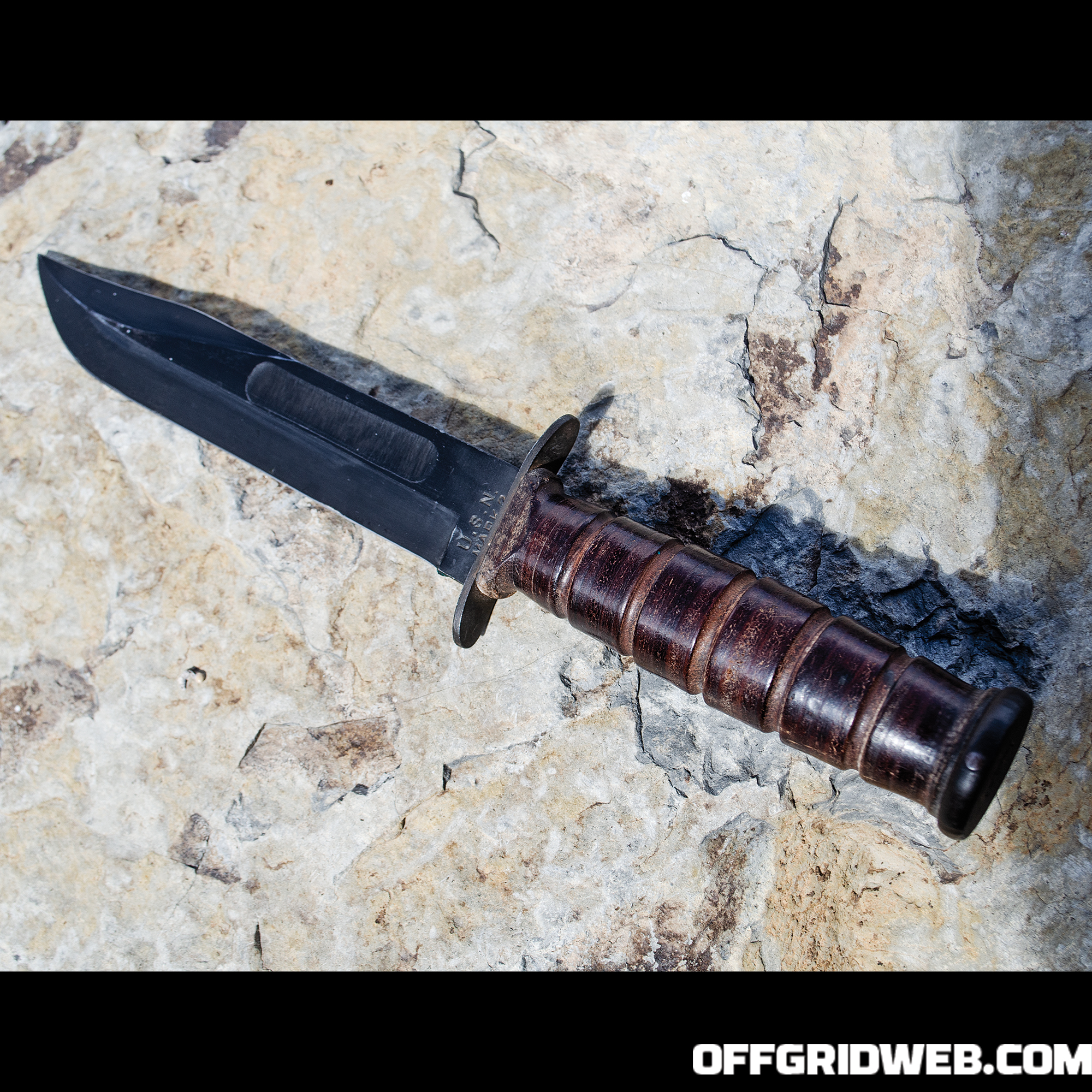
They may differ cosmetically between original and current manufacture, but the materials remain mostly the same along with the Ka-Bar’s form and function.
Marines received their first shipment of knives from Camillus Cutlery on January 27, 1943. It turned out to be a hit with the sailors working alongside the Marines as well, so the Navy adopted it as a diving/utility knife known as the U.S. Navy Utility Knife, Mark 2. This bit of interservice rivalry caused the Marine Corps to rename the M1219C2 as the USMC Mark 2 Combat Knife. Other records of the time reflect the official USMC name as “Knife, Fighting Utility.”
As the Marine Corps falls under the much larger Department of the Navy, most World War II-era knives are marked “USN Mark 2,” regardless of where they ended up. Although initial shipments went to the infantry first, by 1944 every Marine who needed or even wanted a knife had one, and manufacturers made them by the thousands.
Camillus Cutlery has produced over 1 million Ka-Bar knives. Other manufacturers during World War II included Robeson Cutlery and, of course, the Union Cutlery. For some reason, the big Ka-Bar lettering on the ricasso (flat of the blade near the handle) of the Union Cutlery-made knives made an impression on the Marines. By 1944, all Marines were referring to their USMC Mark 2 Combat Knives as simply “Ka-Bars.”
This didn’t go unnoticed, and in 1952, Union Cutlery formally rebranded as Ka-Bar Cutlery.
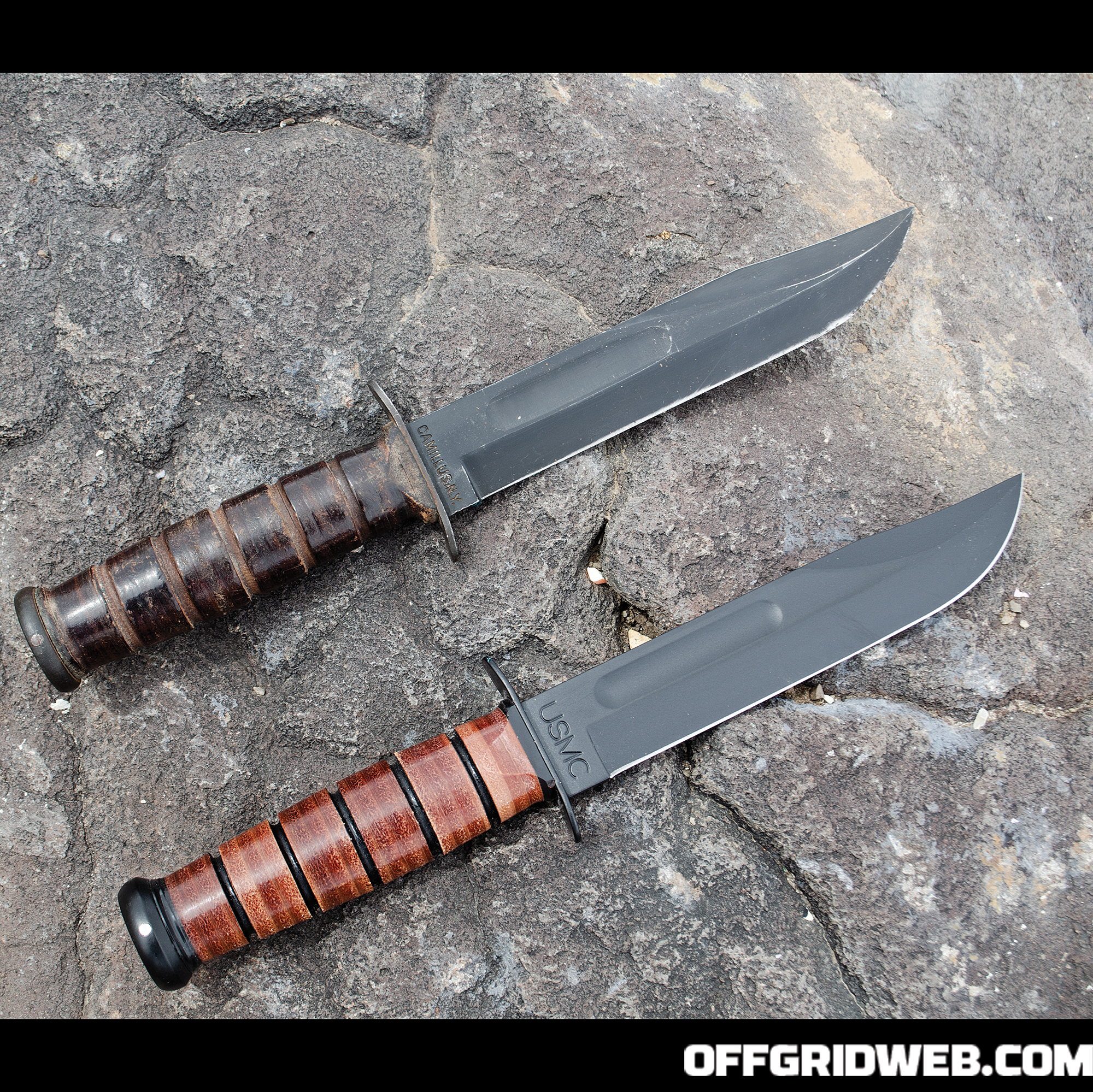
As a generation of veterans mustered out of service, they took their Ka-Bars home with them because they were solid working knives. Footage from the war and the popularity of war movies showed the Ka-Bar to those who didn’t serve, and when people wanted a hunting or camping knife, they often went with a Ka-Bar as a result of these influences.
As the decades passed, the U.S. military kept the Ka-Bar in service. Camillus Cutlery was still their number-one supplier, followed by Utica Cutlery, and, after the Vietnam War, Ontario Knife. These companies and a few others like W.R. Case made the same knives for the civilian market, too.
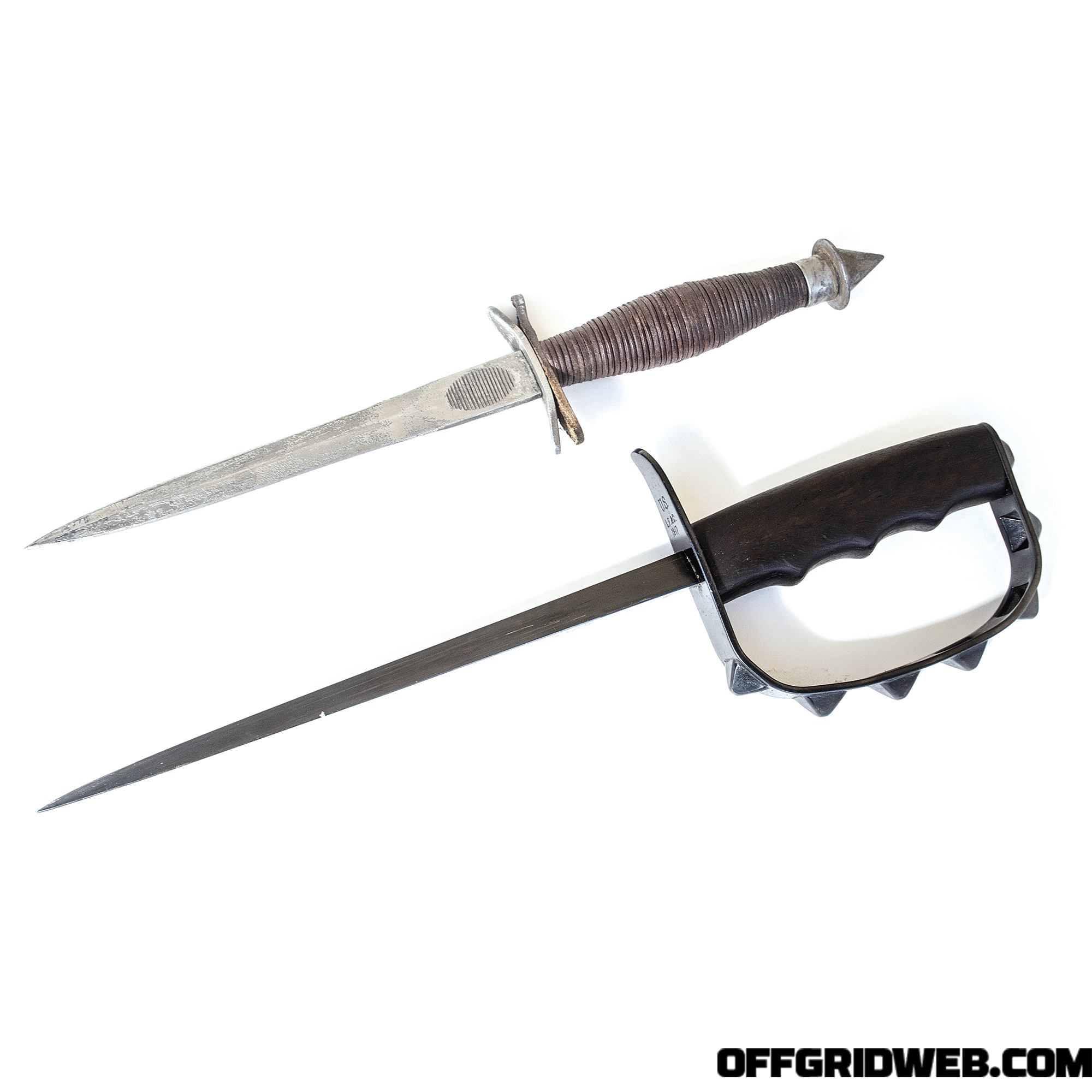
Above: The Ka-Bar knife was a much-needed replacement to the dagger-like blades of the V-42 stiletto and the M1917 trench knife.
For the price of $70 to $100, a good Ka-Bar knife is tough to beat for an all-purpose field knife. There’s a licensed version made in China for a lot less, but stick with a U.S.-made version for better quality steel and other materials.
There are higher-end versions of the Ka-Bar design that have used D2 tool steel in the blade. Some have been made with synthetic handles as a modern revision to the traditional stacked leather washer handle. A number of custom knife makers have even used the pattern to make a more decorative style, incorporating Damascus steel or even super steels like S30V or BG-42.
Despite the numerous offshoots on the market, we still think that the original Mil-spec varieties make for a good all-purpose field knife.
With a proper edge, it can be used to skin game. It’s tough enough for most bushcraft chores like splitting kindling or fashioning wooden stakes. If you find yourself without a hammer or mallet, the butt can be used to pound tent stakes while the blade is sheathed for safety.
Lastly, it makes for an effective fighting knife and weapon. One of the earliest examples was used to kill a bear, and a number of historical military stories list the knife as being used effectively as a weapon, not just from WWII through Vietnam, but as recently as a few years ago …
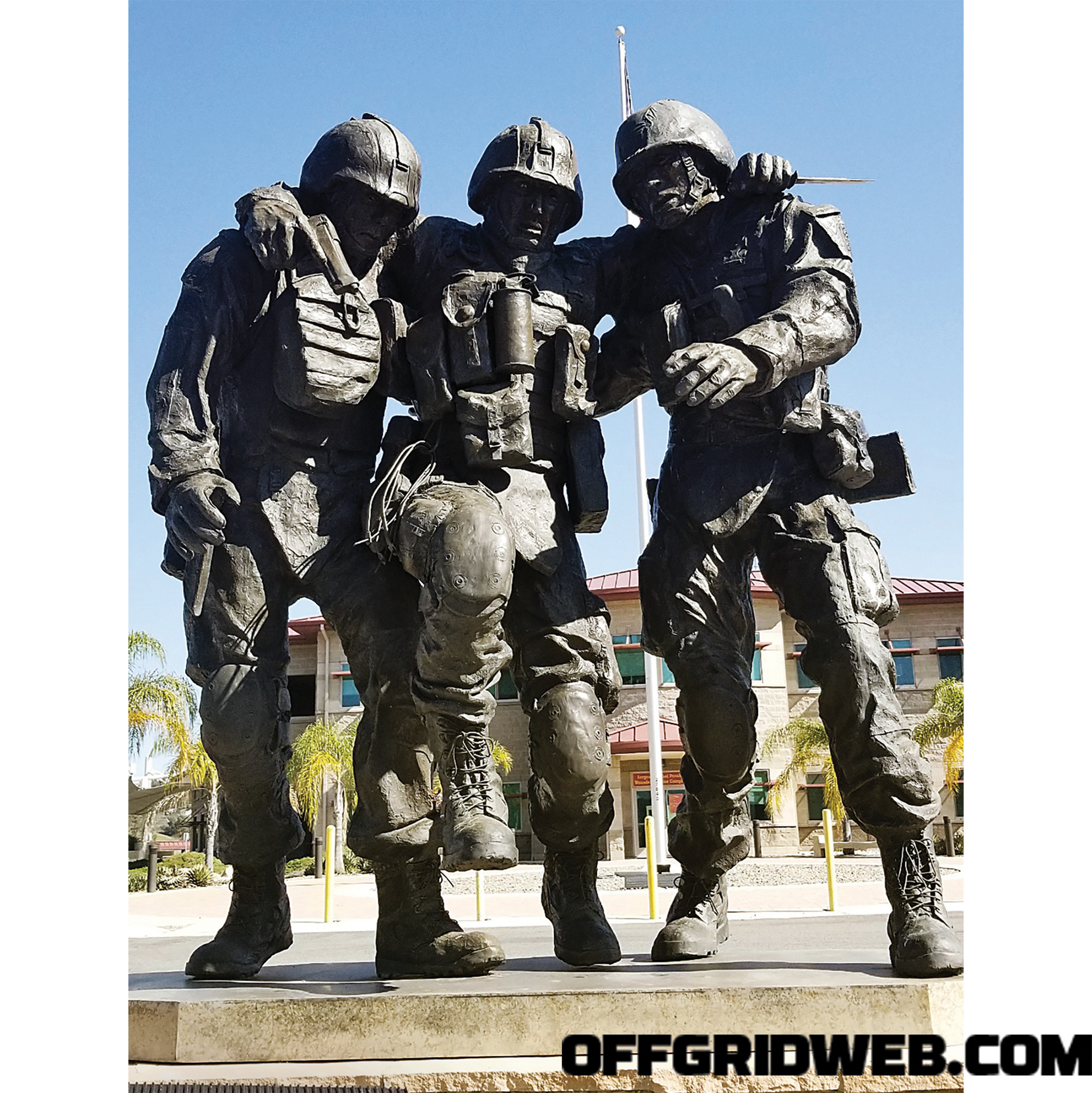
“No Man Left Behind” statue at Camp Pendleton, California. Photos provided by Cameron and Brittany Carden.
In the Battle of Fallujah, then 1st Sgt. Bradley Kasal found himself down to hand-to-hand combat to protect his junior Marines. Kasal fought his way through a house with a Beretta M9 pistol in one hand and his Ka-Bar knife in the other.
Kasal, who was with 3rd Battalion, 1st Marines, received the Navy Cross for his actions that day. The citation reads that on November 13, 2004, he was assisting a combined anti-armor platoon and saw gunfire break out in front of him, and then Marines run out of a building. When Kasal found out that insurgents had pinned Marines in their position inside the house, he and others fought their way inside. In the process, Kasal was wounded in the legs, and when an insurgent threw a grenade, Kasal rolled onto another Marine to shield him from the blast. He later refused medical attention until others were cared for, and he rallied Marines as they cleared the house.
As he was being medevaced from the building, a photographer snapped an iconic photo of him being helped out of the “Hell House” by two Marines. Kasal’s Beretta was still clearly visible in one hand and his Ka-Bar knife in the other. In 2014, that photo was used as the basis for two bronze statues called “No Man Left Behind.” These statues can be found today at the Wounded Warrior Battalions at Camp Lejeune, North Carolina, and Camp Pendleton, California.
We’re almost 20 years short of celebrating the 100th anniversary of the Ka-Bar knife, and moments like that day in Fallujah will ensure the knife is still serving somewhere around the world another 100 years from now.
As simple and plain as it may look, the Ka-Bar is clearly no ordinary knife.
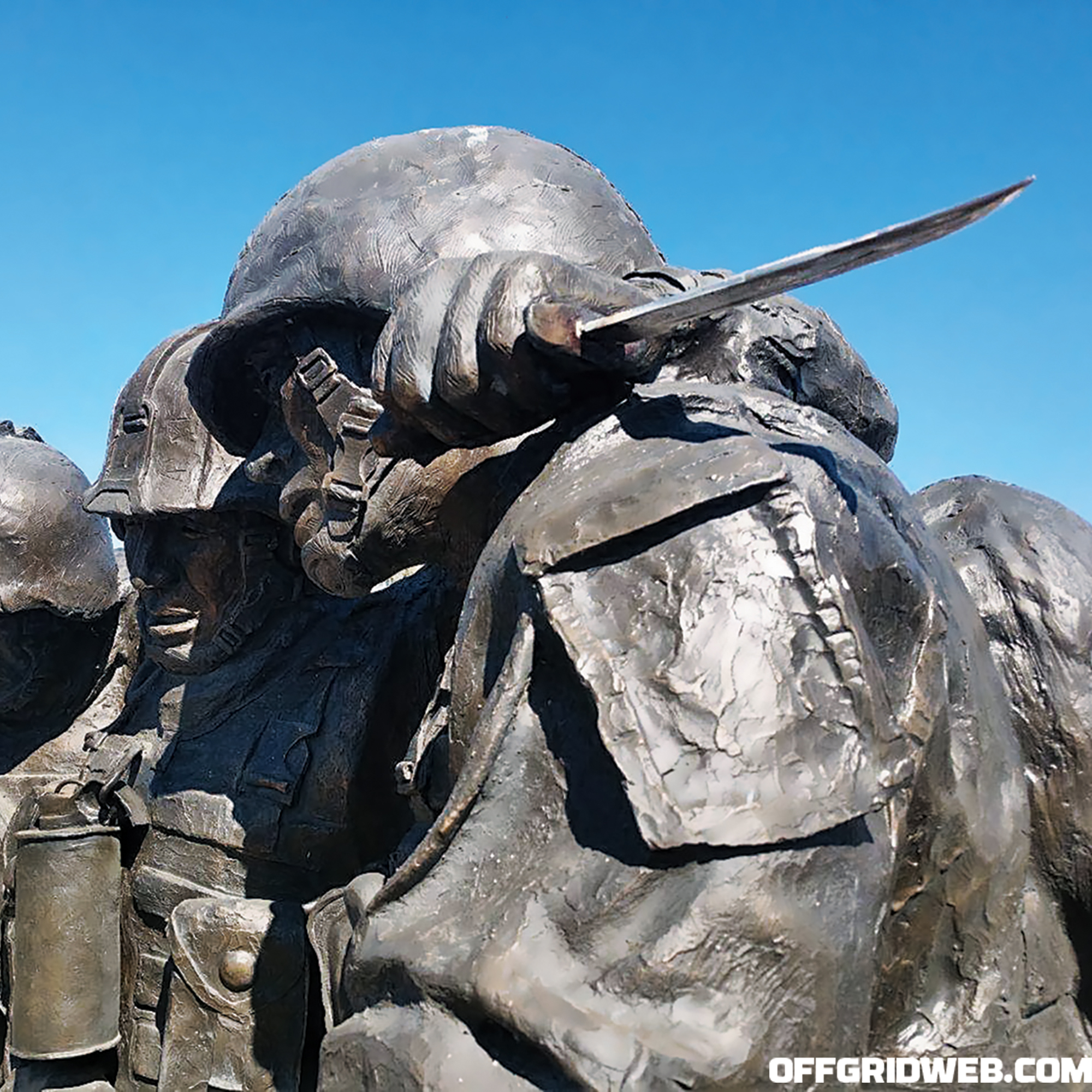
 STAY SAFE: Download a Free copy of the OFFGRID Outbreak Issue
STAY SAFE: Download a Free copy of the OFFGRID Outbreak Issue
No Comments